How does the End Launch Double Ridged WG To Coaxial Adapter achieve high-frequency signal conversion?
In the rapidly evolving world of microwave technology, efficient signal conversion between different transmission media remains a critical challenge. The End Launch Double Ridged WG To Coaxial Adapter addresses this challenge by providing a sophisticated solution for transitioning signals between waveguide and coaxial systems with minimal loss and distortion. This high-performance component utilizes precision-engineered double-ridged waveguide technology combined with strategic impedance matching to ensure seamless conversion across frequencies ranging from 2 GHz to 40 GHz. By employing an innovative end-launch configuration, these adapters eliminate discontinuities at the junction point, enabling clean signal paths essential for applications demanding exceptional signal integrity and reliable high-frequency performance.
The Core Technology Behind High-Frequency Signal Conversion
Innovative Double-Ridge Design Principles
The End Launch Double Ridged WG To Coaxial Adapter achieves superior high-frequency signal conversion through its meticulously engineered double-ridge design. This configuration significantly extends the operational bandwidth compared to conventional rectangular waveguides. The double-ridge architecture creates a carefully calculated impedance profile that facilitates the transition between the waveguide and coaxial transmission lines. By incorporating precisely dimensioned ridges within the waveguide structure, the electromagnetic field distribution is optimized to match the coaxial line's characteristics. This fundamental design approach enables the End Launch Double Ridged WG To Coaxial Adapter to support frequencies up to 40 GHz while maintaining exceptional signal quality. Advanced Microwave Technologies Co., Ltd leverages over two decades of expertise in the field to perfect these critical dimensions, ensuring each adapter delivers consistent performance across its specified frequency range. The ridge geometry is precisely tailored to create a gradual impedance transformation, minimizing reflections that would otherwise degrade signal integrity at the interface between transmission media.
Precision Manufacturing Techniques for Signal Integrity
Manufacturing precision plays a pivotal role in the performance of the End Launch Double Ridged WG To Coaxial Adapter. Advanced Microwave employs state-of-the-art production methods to achieve the exacting tolerances required for optimal high-frequency operation. Computer numerical control (CNC) machining enables the creation of complex internal structures with tolerances measured in microns, essential for maintaining phase coherence and minimizing insertion loss at millimeter-wave frequencies. The critical junction between the waveguide and coaxial connector receives particular attention, as any dimensional inconsistency here can create impedance discontinuities that generate reflections and compromise performance. Each End Launch Double Ridged WG To Coaxial Adapter undergoes rigorous quality control procedures, including dimensional verification and electrical testing up to 110 GHz in Advanced Microwave's fully equipped laboratories. This meticulous attention to manufacturing quality ensures signal conversion efficiency remains consistent across production batches, providing engineers with dependable components for demanding applications in telecommunications, defense, and aerospace systems where signal integrity cannot be compromised.
Material Selection for Optimal Performance
The materials used in constructing the End Launch Double Ridged WG To Coaxial Adapter significantly impact its ability to efficiently convert high-frequency signals. Advanced Microwave Technologies carefully selects high-conductivity metals like aluminum and brass for primary structural components, offering an optimal balance between electrical performance, mechanical strength, and weight considerations. The conductive surfaces within the adapter feature precision plating with materials such as silver or gold to minimize RF losses and resist oxidation, ensuring long-term performance stability even in challenging environmental conditions. Dielectric materials used in the transition region between waveguide and coaxial structures are selected for their stable electrical properties across wide temperature ranges and frequency bands. With their low dielectric loss tangent and consistent permittivity, these materials maintain the integrity of signals passing through the End Launch Double Ridged WG To Coaxial Adapter. This attention to material science enables Advanced Microwave's adapters to achieve the high return loss specifications of ≥20 dB, ensuring energy is efficiently transferred rather than reflected at the interface. The combination of proper material selection and precision manufacturing results in adapters capable of handling the power levels and frequency ranges required in cutting-edge microwave systems.

Signal Transition Mechanisms and Efficiency Factors
Impedance Matching Techniques for Seamless Conversion
The End Launch Double Ridged WG To Coaxial Adapter achieves exceptional signal conversion efficiency through sophisticated impedance matching techniques that create a smooth transition between different transmission media. At the heart of this process is the gradual transformation of impedance from the waveguide's characteristic impedance to the standard 50-ohm impedance of coaxial systems. Rather than creating an abrupt change that would generate significant reflections, Advanced Microwave's design implements a carefully calculated impedance taper within the double-ridged section. This progressive transition minimizes standing waves and optimizes power transfer across the entire operating frequency range. The adapter's internal geometry features precision-machined transitions that maintain constant impedance along the signal path, with the double-ridge configuration providing the flexibility needed to achieve this challenging design requirement. Advanced Microwave Technologies leverages sophisticated electromagnetic simulation tools to model and refine these impedance matching structures before physical implementation, ensuring the End Launch Double Ridged WG To Coaxial Adapter delivers the specified return loss performance of ≥20 dB. This meticulous attention to impedance matching translates directly into lower insertion loss and more reliable system performance, particularly in applications where signal quality directly impacts overall system capabilities.
Field Mode Conversion Dynamics
The conversion between the electromagnetic field modes present in waveguide and coaxial transmission lines represents a fundamental challenge in high-frequency signal conversion. The End Launch Double Ridged WG To Coaxial Adapter addresses this challenge through sophisticated field mode conversion mechanisms engineered into its structure. Waveguides typically operate with TE (transverse electric) or TM (transverse magnetic) propagation modes, while coaxial lines support TEM (transverse electromagnetic) mode propagation. The double-ridged waveguide section serves as an intermediate structure that facilitates the transition between these different field configurations. By carefully controlling the dimensions and geometry of the ridges, Advanced Microwave engineers manipulate the electromagnetic field distribution to gradually transform from waveguide modes to coaxial TEM mode. This field transformation occurs without introducing spurious modes that would cause signal degradation. The End Launch Double Ridged WG To Coaxial Adapter's end-launch configuration positions the coaxial center conductor optimally within the electric field maximum of the waveguide, ensuring efficient energy transfer. This precise alignment of field patterns minimizes excitation of unwanted modes that could cause signal distortion or frequency-dependent performance variations. Advanced Microwave's extensive experience in microwave component design allows them to perfect these complex mode conversion mechanisms, resulting in adapters that maintain signal integrity across their entire specified frequency range.
Power Handling and Thermal Management
The End Launch Double Ridged WG To Coaxial Adapter must not only convert signals efficiently but also handle substantial power levels without performance degradation. Advanced Microwave Technologies designs these adapters with careful attention to power handling capabilities and thermal management considerations. The adapter's construction incorporates materials with excellent thermal conductivity to dissipate heat generated during high-power operation. While standard models are specified for operation at one atmosphere, the robust construction ensures reliable performance across various environmental conditions. The internal geometry is designed to avoid sharp edges or discontinuities that might create regions of concentrated electric field strength, which could lead to voltage breakdown or arcing at high power levels. This is particularly important in applications such as radar systems or high-power communication links where the End Launch Double Ridged WG To Coaxial Adapter must maintain performance without failure. Thermal expansion effects are also considered in the design, with material combinations and mechanical tolerances selected to maintain critical dimensions even as temperatures fluctuate during operation. Advanced Microwave's manufacturing processes ensure consistent production quality, delivering adapters that meet specified power handling requirements while maintaining the signal conversion efficiency that makes these components essential in high-performance microwave systems.

Application-Specific Optimization and Customization
Telecommunications and Satellite Communication Implementations
The End Launch Double Ridged WG To Coaxial Adapter plays a critical role in modern telecommunications and satellite communication infrastructures where reliable high-frequency signal transmission is paramount. In these applications, the adapter's ability to support frequencies up to 40 GHz makes it ideal for handling the increasing bandwidth demands of next-generation communication systems. Satellite ground stations utilize these adapters to connect antenna feeds to receiver chains with minimal signal degradation, ensuring maximum sensitivity for weak signals from distant satellites. The End Launch Double Ridged WG To Coaxial Adapter's excellent return loss characteristics (≥20 dB) minimize signal reflections that would otherwise compromise data integrity in high-throughput communication links. Advanced Microwave Technologies works closely with telecommunications providers to customize adapter specifications for particular frequency bands used in specific satellite constellations or terrestrial microwave links. The wideband performance of these double-ridged adapters allows system designers to implement multiband solutions without requiring multiple specialized components, reducing system complexity and potential points of failure. With the ever-increasing demand for bandwidth in both consumer and commercial communications, the precise signal conversion provided by these adapters ensures that critical infrastructure can meet performance requirements while maintaining the signal quality necessary for modern digital modulation schemes.
Defense and Aerospace System Requirements
Defense and aerospace applications impose uniquely stringent requirements on microwave components, demands that the End Launch Double Ridged WG To Coaxial Adapter is specifically engineered to meet. In radar systems, these adapters facilitate the connection between high-power transmitter waveguides and coaxial transmission lines with minimal loss, maximizing effective radiated power and detection range. Advanced Microwave's adapters provide the phase stability and amplitude flatness essential for phased array radar systems where precise signal characteristics directly impact target resolution and discrimination capabilities. The mechanical robustness of the End Launch Double Ridged WG To Coaxial Adapter ensures reliable operation even in high-vibration environments such as aircraft or missile systems. Advanced Microwave Technologies offers customized versions of these adapters for defense applications, implementing specialized materials and construction techniques to withstand extreme environmental conditions including wide temperature ranges, humidity, and salt fog exposure. For aerospace applications where weight is a critical consideration, custom aluminum alloy versions can be manufactured without compromising electrical performance. The high precision manufacturing employed in producing these adapters ensures consistent performance across production lots, an essential characteristic for defense systems where component interchangeability and predictable performance are non-negotiable requirements. Advanced Microwave's ISO:9001:2008 certification and RoHS compliance provide additional assurance of quality and environmental responsibility in these sensitive applications.
Research and Measurement System Integration
The End Launch Double Ridged WG To Coaxial Adapter serves as a crucial component in research laboratories and measurement systems where accurate signal characterization across wide frequency ranges is essential. Advanced Microwave Technologies designs these adapters with particular attention to phase and amplitude stability, ensuring that measurement results remain consistent and reliable. In antenna measurement systems, these adapters connect test antennas to measurement equipment with minimal distortion of radiation patterns or gain characteristics. The adapter's excellent return loss performance minimizes measurement uncertainties that would otherwise complicate data interpretation. Research facilities developing new communication technologies rely on the End Launch Double Ridged WG To Coaxial Adapter to provide consistent reference points for experimental setups, with the wideband capability supporting investigations across multiple frequency bands without changing test configurations. Advanced Microwave's manufacturing capabilities extend to producing custom adapters for specialized research applications, including non-standard flange configurations or frequency ranges optimized for particular experimental requirements. The company's technical team works closely with research institutions to develop adapters that meet the unique challenges of cutting-edge investigations in fields ranging from quantum computing to terahertz imaging. With laboratories equipped with measurement capabilities up to 110 GHz, Advanced Microwave can verify adapter performance across their entire operational range, providing researchers with fully characterized components that introduce minimal uncertainties into experimental results.
Conclusion
The End Launch Double Ridged WG To Coaxial Adapter represents a pinnacle of microwave engineering excellence, achieving high-frequency signal conversion through precision design, advanced manufacturing, and materials science. Its ability to seamlessly transition between waveguide and coaxial systems makes it indispensable in modern telecommunications, defense, and research applications where signal integrity at high frequencies is non-negotiable. With Advanced Microwave Technologies' 20+ years of expertise, customers benefit from not just superior products but comprehensive solutions tailored to their specific requirements.
Need a customized End Launch Double Ridged WG To Coaxial Adapter for your unique application? Our professional technical R&D team is ready to develop the perfect solution with price advantages, strict quality control, and strong after-sales support. Contact us today at sales@admicrowave.com to discover how our global manufacturing capabilities and fast delivery can enhance your microwave systems!
References
1. Johnson, R.C. & Jasik, H. (2021). Antenna Engineering Handbook: Waveguide-to-Coaxial Transitions for Modern Communication Systems.
2. Williams, D.F. & Marks, R.B. (2022). Calibration of Vector Network Analyzers Using Precision Waveguide-to-Coaxial Adapters.
3. Zhang, L. & Wu, K. (2021). Double-Ridged Waveguide Components for Millimeter-Wave Applications: Design and Analysis.
4. Chen, X. & Luk, K.M. (2023). Advanced Microwave Transition Techniques in Modern Communication Systems.
5. Pozar, D.M. (2022). Microwave Engineering: Waveguide Components and Resonators.
6. Harris, J.R. & O'Connor, P. (2023). High-Performance Microwave Adapters for Satellite Communication Ground Stations.
YOU MAY LIKE
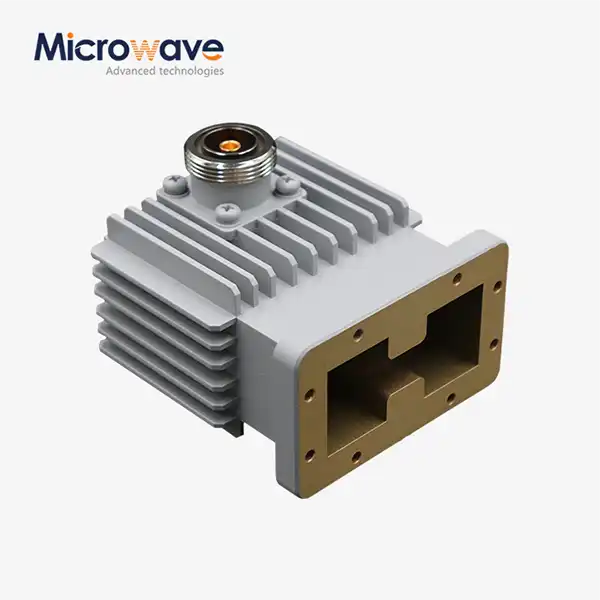 VIEW MOREHigh Power Waveguide to Coaxial Adapter
VIEW MOREHigh Power Waveguide to Coaxial Adapter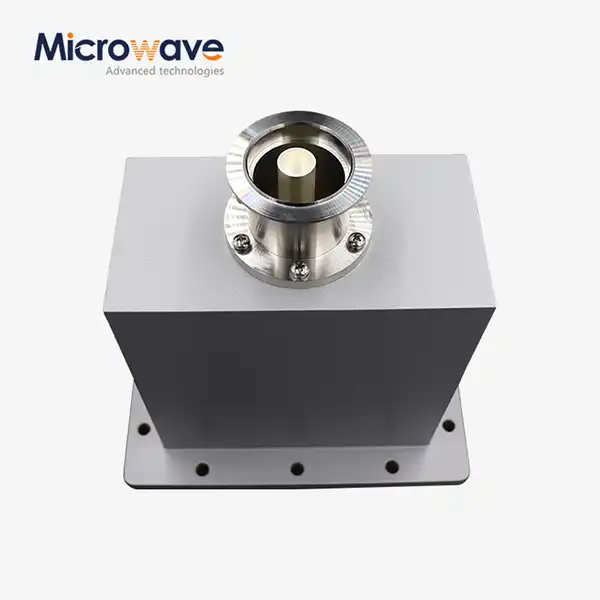 VIEW MOREEnd Launch Waveguide to Coaxial Adapter
VIEW MOREEnd Launch Waveguide to Coaxial Adapter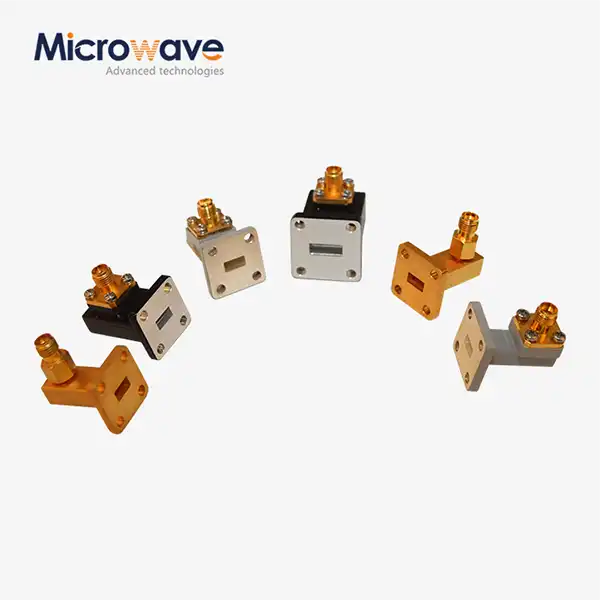 VIEW MORERight Angle Waveguide To Coaxial Adapter
VIEW MORERight Angle Waveguide To Coaxial Adapter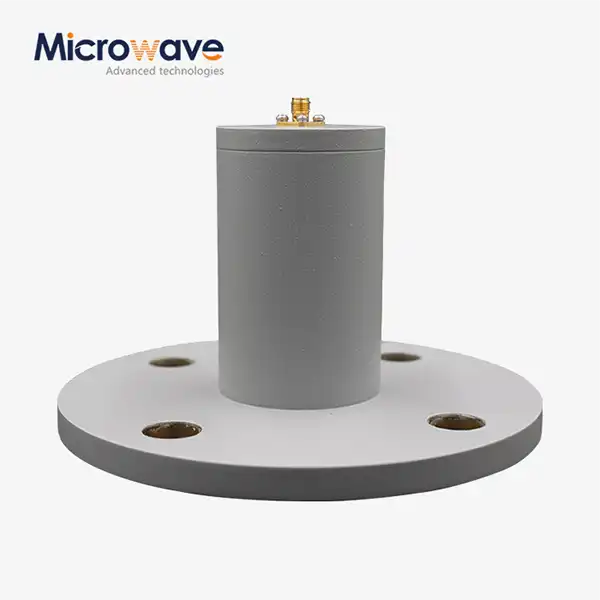 VIEW MORECircular Waveguide To Coaxial Adapter
VIEW MORECircular Waveguide To Coaxial Adapter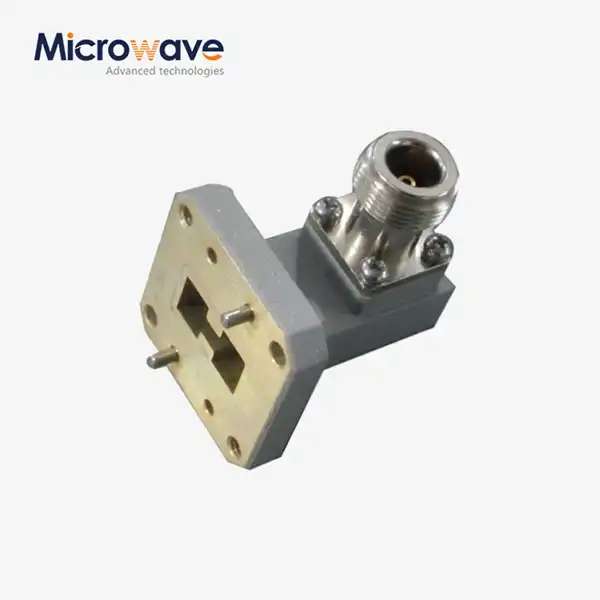 VIEW MORERight Angle Double Ridged WG To Coaxial Adapter
VIEW MORERight Angle Double Ridged WG To Coaxial Adapter VIEW MOREEnd Launch Double Ridged WG To Coaxial Adapter
VIEW MOREEnd Launch Double Ridged WG To Coaxial Adapter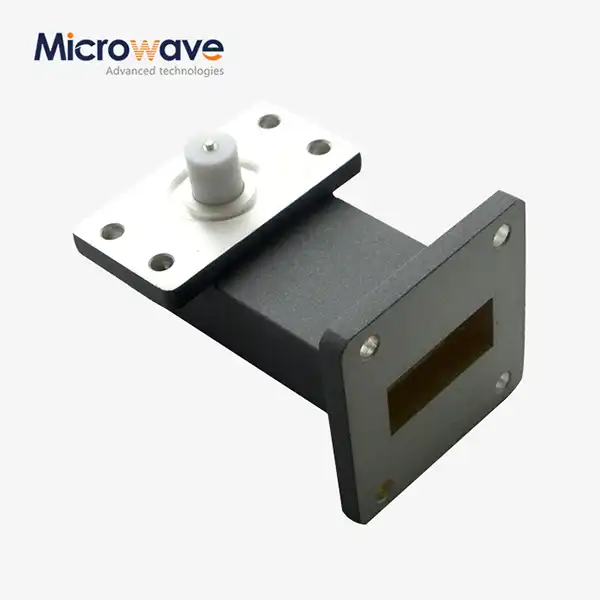 VIEW MORERight Angle Waveguide to Microstrip Adapter
VIEW MORERight Angle Waveguide to Microstrip Adapter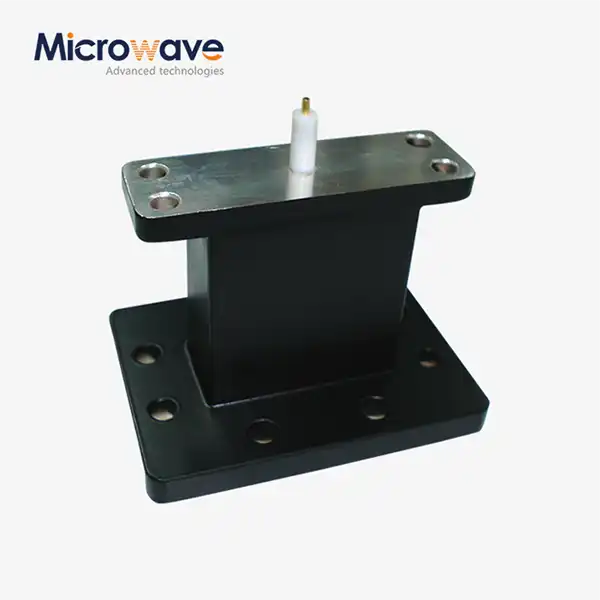 VIEW MOREEnd Launch Waveguide to Microstrip Adapter
VIEW MOREEnd Launch Waveguide to Microstrip Adapter




